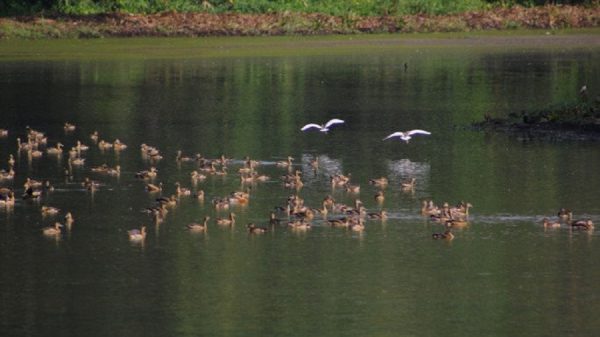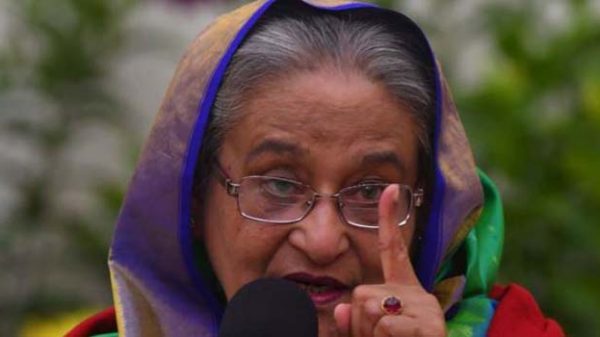Coronavirus: Disease detectives track an invisible culprit

Disease detectives are trying desperately to beat the clock and find those who have been exposed to the virus.
Can they move fast enough to stop the pandemic?
As a public-health director in Savannah, Georgia, Cristina Pasa Gibson spent her time in an office filled with calorie counters and yoga mats and the scent of jasmine tea. Then she started working on contact tracing, a no-holds-barred effort to stop the pandemic, and her office and her life were turned upside down. “I felt like I was in a Vegas casino,” she says. “I didn’t know what time it was, what day it was, who I was.”
She and her colleagues in Savannah and her counterparts in other cities across the country have been working frantically to trace the path of the infection and to find those who may have been exposed to the virus. They talk to patients, asking for names of individuals they have spent time with, and chase down those individuals and to tell them to remain isolated so they do not infect others.
The pressure on investigators and contact tracers has been intense. “I basically lived in my office,” says Gibson, describing the early days. “It was Groundhog Day over and over.”
Today their role is even more important. The US now has the highest number of cases and deaths in the world.
Red State, Blue State
Gibson is grappling with the pandemic, and she and her colleagues are trying to use contact tracing as a way to contain the virus. Her counterparts in New Haven, Connecticut, a city that lies almost 900 miles to the north, are also working feverishly to track the disease. Yale University student Tyler Shelby, 26, the son of a Kansas police detective and a fan of the fictional detective Sherlock Holmes (played by Benedict Cumberbatch in a BBC version), helped to organise an investigative squad and coordinates dozens of volunteers.
Cristina Pasa Gibson of Savannah and Tyler Shelby of New Haven are struggling with life-or-death matters in a country where people are deeply divided in their views of the pandemic and how the government should manage the health crisis.
The number of cases has shot up in Georgia, Florida, Texas and other states where governors tried to reinforce Trump’s message about the nation’s economic comeback. Meanwhile the number of cases in Connecticut, New York and other northern states, places initially hit hard by the virus, has gone down.
The contact-tracing initiatives in New Haven and Savannah are far from perfect. But they have been recognised by experts in the field as programmes that were started early and run with vigour. Taken together, these two programmes offer a snapshot of the high-stakes drama of contact tracing and show how the system is being put in place in both the northern and the southern parts of the country.
Uncovering secret lives
Gibson spoke recently on the phone in her Savannah office with someone who had tested positive: “He asked me: ‘Am I going to die?’ That’s a terrible question to be faced with because so much is unknown. I could not give that person a definite answer.” Talking to people on the phone when they are scared and anxious is hard. In addition, the people who work in contact tracing have to find out key information from those who have gotten sick.
Investigators and contact tracers try to find out whom the patients spoke to during a two-day period before they became ill and for the period of time beyond that – until they isolated themselves from others. That means recalling anyone they saw for more than 15 minutes and who stood or sat within six feet of them. Did you see a movie, take an Uber or go to church? If so – did you stop for donuts? an investigator may ask, according to a government report on contact-tracing programmes.
The challenges are immense: “You’re asking people to think back,” says Yale student Tyler Shelby. This raises the possibility for potentially awkward conversations: “You don’t necessarily need to specify who they slept with. It’s really just anybody that meets that criteria”, or the guidelines that define close contact as anyone within six feet of you.
The conversations with a patient on the phone can be tough, with long silences. “Definitely people can have hesitation,” Shelby says.
“My first call – I was really nervous,” says Yale student Paulina Luna Martinez, who is 27. She soon found it easy to speak with the people, though, and spends about a half-hour with each: “They talk about their lives.” She and the other volunteers send back the lists of contacts they have compiled, and a separate group of people tracks down the individuals on these lists, men and women who have been exposed to the virus.
One of the most important aspects of contact tracing is helping those who are struggling. People who test positive need to stay separated from others, but they may need help. Those who have been exposed to the virus but remain healthy may not have enough money to see them through two weeks of isolation.
As Columbia University’s Patrick Kachur, explains, offering help to those who are sick and trying to protect others from the virus is one of the most important aspects of contact tracing. “People think: ‘This has to work because this is a key to getting back our lives,” he says. “But it’s more than just counting cases and closing investigations. It’s putting people in touch with the services they need.”
In New Haven and Savannah, the investigators and contact tracers help people contact officials with social-service agencies if they need a place to stay during quarantine or would like someone to deliver groceries. In Nevada, says Adriane Casalotti, a spokeswoman for the National Association of County and City Health Officials, they feed their horses.
Running against the clock
Contact tracing has a long history – the system was used to stop the spread of syphilis in the US in the 1930s. More recently, tracers ferreted out cases of Ebola in West Africa and other countries and helped beat back the disease. Yet contact tracing has never been used on a virus as ferocious as Covid-19, on such a broad scale, and these factors have helped to expose shortcomings in the tracing system.
In England, the inefficiencies of the NHS Test and Trace, as the contact tracing programme is known, have been exposed by the BBC and other media.
Analysts at the Center for Health Security say that the cost of the contact tracing, if done properly across the nation, would be steep: $3.6b USD. Yet only some of the resources are available. According to NPR, about 37,000 tracers have so far been assigned to the task
New Haven and Savannah are both about the same size. New Haven has a population of about 130,000, and Savannah has a population of 145,000. But Cristina Pasa Gibson and Tyler Shelby and others who live in these two cities have experienced the pandemic in different ways.
New Haven, a city once known for its manufacturing industry and now for its university, Yale, is close to the New York epicentre. For many New Yorkers, New Haven is the end of the line, the place where they step off the train. In April, New Haven officials were reporting 20-35 new cases each week per 10,000 people, according to DataHaven, a nonprofit organisation, a spike that was caused partly by people from New York. By late June, more than 1,070 people had died of the disease in New Haven and the surrounding county.
Savannah is a port city far from the coronavirus hotspots. In April, while Cristina Pasa Gibson and her colleagues were organising their team, they had fewer cases to manage. Officials in Savannah and the surrounding Chatham County reported only one or two new cases each week per 10,000 people, according to DataHaven. By late June, 37 people in Chatham County had died.
The number of cases in New Haven started to drop in the springtime. Slowly, though, cases in Savannah and Chatham County began to climb. The explanation for the disparity in infection rates between New Haven and Savannah are varied and complex. Geography plays a role, but so do decisions made by political leaders.
The Republican governor of Georgia and the leaders of other states in the southern part of the country rushed to restart their economies. The Democratic governor of Connecticut and leaders of other northern states waited.
New Haven embodies the northern model – investigators and tracers were quickly deployed in large numbers (more than 150 were put in rotation, and they have since merged with a statewide group of several hundred). Savannah reflects the southern model of contact tracing and review of cases: their 49-member team is leaner.
Albert Ko, a professor of epidemiology at Yale School of Public Health who serves on a state board, the Reopen Connecticut Advisory Group, says the New Haven team is doing an above-average job. Experts have also praised the efforts in Savannah.
In both cities, though, investigators are struggling to contact people fast enough. They are floundering in other ways too. The Savannah team members often find themselves without a Spanish speaker and rely on a Spanish-language phone line. In New Haven, they only managed to conduct interviews with 64% of the individuals they tried to contact, according to an epidemiologist with the New Haven health department.
Investigators and tracers should be able to contact 90% of patients within a day of hearing that they have the virus, according to the industry standard.
Still, says Patrick Kachur, a Columbia University professor who used to work for the Centers for Disease Control and Prevention (CDC), a programme like the one in New Haven has value. “It’s two-thirds of the way to 90%,” Kachur says. “Even if it can’t be done perfectly, it’s still worth doing.”
Looking for clues
Last winter Tyler Shelby, who is studying for both a Yale medical degree and a public-health doctorate, was working at a cubicle decorated with potted vines and getting ready to go to Uganda on a Fulbright scholarship. Then he started seeing news about Covid-19 on Reddit. “I thought: I’m needed right here,” he says. He began working with his colleagues on a contact-tracing programme. Soon the number of cases shot up.
Shelby and others on his team dug in and became specialists in US-based “shoe-leather epidemiology”, as a Vermont health official, Daniel Daltry, puts it. Their heroes are amateur sleuths on true-crime podcasts and legendary figures such as Watson, the sidekick to the fictional detective Sherlock Holmes. Watson could always “go with the flow”, says Shelby: “He puts up with Holmes, but he’s observant himself.”
The disease detectives are a diverse lot: working with Shelby, Yale medical student Paulina Luna Martinez began calling patients from her group house in New Haven. Maritza Bond, the city’s public-health director, studied a heat map of her old neighbourhood, Fair Haven, an area filled with Puerto Rican families that became a Covid hot spot, and epidemiologist Brian Weeks tracked data (“I like to make sense of things,” he says).
Savannah epidemiologist Meredith Avery started working in a small-town pharmacy at 16, and Cristina Pasa Gibson used to take care of laboratory monkeys. The successes or failures of the disease detectives in the two cities hold lessons for those around the world.
During her morning commute from Statesboro, a town that is about an hour’s drive from Savannah, Avery listens to Crime Junkie. She has a keen interest in investigations, both criminal and epidemiological, and says that she felt uneasy in the early days of the pandemic and a bit excited too. “You learn about these things in school,” says 30-year-old Avery. “And you think it’s never going to happen here.”
Contact tracers in Singapore used CCTV footage to track down people who were exposed to the virus. South Korean authorities constructed “virtual nets” around individuals to protect others from the virus, according to the Hill.
But most people in the US baulk at contact-tracing apps, according to a Washington Post-University of Maryland poll, because of privacy concerns.
Thurmond Neill Tillman, a pastor at First African Baptist Church in Savannah, says he understands the need for contact tracing: three people in his congregation have become ill with the virus. But he is concerned about the system’s invasive nature. “I can see how it would be very troubling,” he says. “I probably would have hated it as a teenager.”
Empathy lessons
Detectives are good listeners. They try to win the trust of people, and the ability to put yourself in someone else’s shoes is helpful. Cristina Pasa Gibson, 50, says she learned about cultural differences as a five-year-old while visiting her cousin in Manila. They came across an illustration of an egg basket in a colouring book, and her cousin painted one of the eggs dark, making it look like an egg soaked in slaked lime, a snack in the Philippines. “I said: ‘There’s no such thing as a purple egg,’ and I hit her,” Gibson says. “I was such a spoiled brat. That began my introspective journey.”
Outside of Manila, Gibson saw families living in poverty, with ramshackle huts as homes, and decided in college to work in public health. The experience she had as a child have helped her in her work fighting the pandemic: she understands that not everyone sees the world in the same way, and they are fighting the virus in different ways too.
Disease detectives are now settling into their roles. Yet the future of the nation and the trajectory of the disease remains unclear. The president is planning to hold rallies this summer, and activists are continuing to protest against policy brutality. These mass gatherings pose problems for investigators and contact tracers, who struggle to get in touch with people who have joined the gatherings and may be infected.
Disease detectives are now settling into their roles. Yet the future of the nation and the trajectory of the disease remains unclear. The president is planning to hold rallies this summer, and activists are continuing to protest against policy brutality. These mass gatherings pose problems for investigators and contact tracers, who struggle to get in touch with people who have joined the gatherings and may be infected.
The people who are working on the contact-tracing programmes are honest about their limitations. “From the beginning one of our mantras was: ‘We’ll do as much as we can for as long as we can,'” says Yale student Tyler Shelby: “Everything was unclear and nobody knew what was around the corner. We just accepted that uncertainty. We figured that we’re not going to be able to resolve everything, but we’re going to do what we can.”
In Savannah, Cristina Pasa Gibson has been calling people to tell them about their Covid-19 test results, a departure from the traditional purview of contact tracing but part of the larger fight against the pandemic. She jokes with her colleagues about setting up metal bells in the office so they can ding them whenever someone on the phone calls out: “Thank you, Jesus.”
The person on the phone has escaped the virus, marking a victory for them and for the disease detectives too, and she wants to mark the occasion.





























Leave a Reply